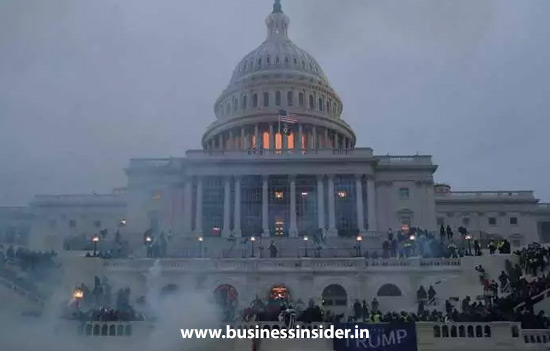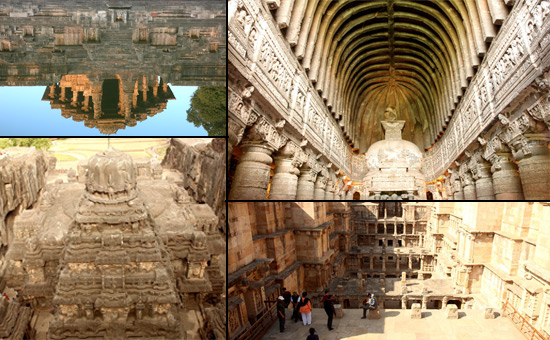- This article lists 8 parameters to compare the state of democracy in U.S.A and India. People who stay in glass houses do not throw stones at others. I admire the U.S. for Innovation.
According to a Reuters report of July 7,
2023 a senior U.S. diplomat would travel to India to engage with civil society
over free speech and marginalization of minorities. Another report said
the diplomat would also discuss democracy and human rights. During Prime Minister Modi’s visit there were concerns about state of democracy in India not to forget Obama’s interview.
Honestly, Indians
within India and the U.S. have got tired of this U.S. approach of monitoring democracy
and human rights w.r.t India. On Minority Rights in India an earlier article
shared an
Indic view to what Barrack Hussein Obama said
One must remember that India is the only democracy in the Indian sub-continent where minority population has increased significantly (Muslims 3.77 crs in 1947 to atleast 21 crore in India today) unlike Pakistan and the Bangladesh where minority population has fallen and they are persecuted.
Read Why has
Democracy failed in Pakistan
At the outset I wish to thank those who invented the Net and other Tech companies without whom email, the web etc. might not have been possible. In Tech, the U.S. stands for Innovation with Uber and Twitter being o/s examples.
This is not a rant against the U.S. a country I admire for its open society, meritocracy, high quality universities etc. I believe that no country is perfect but this hectoring has to stop. Each one of us is striving to do better. I am grateful to the U.S. for welcoming Indian Gurus like Swami Vivekananda, Paramhanda Yogananda, Swami Prabhupada (founder ISKCON) and Swami Hariharananda etc.
Album of Ashrams
of Los Angeles and Santa Barbara N Shanti Ashrama,
California
Every country has a different history that shapes the present. We must remember India’s colonial and Middle East past, understand Indian history from an Indic not leftist perspective and then relate it to the present. Thanks to the Internet, existing history and one-sided laws are being questioned in India. Accusations based on Western concepts of democracy, human rights have little impact because India gave refuge to the Jews and Parsis before the world discovered North America.
This article seeks to
put matters in perspective by comparing, on different parameters, how India
compares with the U.S. I must be upfront and say that am not an expert on U.S.
matters, have used research and insights.
1. Whilst referring to democracy and human rights in India, must say that democracy existed in India, in an Indic form, before North America was even discovered.
Read Concept of
Elections and Democracy in Vedas and Dharma Sastras
On human rights, former foreign
secretary Kanwal Sibal wrote Human
Rights is a Western Policy Tool in the Economic Times, “Human rights as a concept, with philosophical and political roots in the French and American Revolutions, was inscribed by the West on the international agenda by establishing the UN Human Rights Commission in 1946 and in 1948 by the adoption of a Universal Declaration of Human Rights (UDHR) by the UN General Assembly, a document drafted under Western superintendence.”
Read Human
Rights in Sanatana Dharma
It is because democracy is ingrained
into Indians that the Transfer of Power, i.e. post Lok Sabha elections for the
Central government (federal), from one political party to another has happened
smoothly numerous times.
 The aftermath of riots at the U.S. Capitol Hill building.
The aftermath of riots at the U.S. Capitol Hill building.
Conversely, remember violence in
Washington before President Biden took office from Trump.
On January 6, 2021 a mob of Trump supporters raided Capitol Hill. “A bipartisan Senate report found that at least seven people had lost their lives in connection with the Jan. 6 attack.” Source
New York Times Jan 3, 2022
Also see photos
of siege on Capitol Hill that left one dead and many injured-Business Insider However, a perusal of the NYT report indicates none were killed by protestors-it was vandalism never the less.
These remarks against democracy in India reminds me of the old Hindi idiom Ulta Chor Kotwal Ko Dantey-pot calling the kettle black.
2. Violence in Washington pales in comparison to what happened in Seattle, Portland etc during the Black Lives Matter-Antifa violence in 2020 that was caused by the killing of George Floyd.
Read How
a Year of protests changed Seattle And Atleast
20 Americans were killed during protests and political unrests in 2020
I am not saying that India is perfect and has no problems, the latest being Manipur. Yet we are continuously striving to accommodate and restore peace. Having said that, India is trying to rediscover its roots so expect protests from people affected by change in status-quo.
Read What
are the reasons for violence in Manipur
3. Appointment of Supreme Court Judges
First we
need to understand how the judiciary is structured. This Indian Express article explains it well.
“Unlike in India, where the judiciary is integrated, federal and state courts in the US are separate, and the 9-member US Supreme Court is the apex forum of the federal system. State systems have their own top courts, and are typically called State Supreme Courts.
In terms of hierarchy,
the US Supreme Court sits above 13 circuit courts (which are courts of appeal),
which sit above 94 district level trial courts. The circuit and district
federal courts are spread all over the country, and the Supreme Court is
located in the national capital, Washington, DC.
Decisions by district courts can be appealed in circuit courts, but the federal Supreme Court is usually under no obligation to hear appeals against circuit court decisions– it admits less than 1% of appeals made to it.
The US Constitution provides that federal judges – including Supreme Court “justices”– are to be nominated by the President and confirmed by the Senate (the upper chamber of the US Congress).
Because Supreme Court
judges can serve for life, and the process of their
appointment is political, filling a vacancy becomes a major point of contention between the Democratic and Republican parties.” Source
Read How Judges and
Justices are chosen
Conversely, without getting into the constitutional validity of the collegium system in India, judges appoint judges. For FAQ on appointment of Federal Judges
4. The U.S. continues to use Ballot papers whilst India has moved on Electronic Voting Machines. Many have tried to prove that these machines can be manipulated but were unable to prove their views before the authorities.
I understand the U.S. process is largely true. Mostly, if you are voting at a polling booth, you get a paper ballot which is then scanned into a machine that keeps the count. At some places you have an option of voting on a computer terminal. You get a receipt of your ballots which can be manually tallied.
Read 6 Conspiracy
theories about 2020 elections debunked N How does
vote by mail work and does it increase election fraud
5. “Election rules are determined at county (the closest Indian equivalent is a district) level. Conducting an election in the USA is like conducting 1000 separate elections simultaneously. The rules are similar but still the individual counties are responsible for conducting the election, not the federal or state authorities. They can set election laws. But state has primacy in setting the election laws, not the federal.”
Local sources clarify that the State constitution guides how elections are to be conducted, how ballots are, printed, counted, and then certified. There may be some minor differences at county level.
Conversely, in India election rules are determined at a country level. There is a Central Election Commissioner and State Election Commissioner for each state. Further, the Delimitation Commission is appointed by the President of India and works in collaboration with the Election Commission of India. Source
Read Securing Election Commission’s autonomy and Drishti
IAS.com and Role of
State Election Commissioner
A resident American views on para 5, “Yes, our local governments have quite a bit of relative freedom. Good Americans are always doing their best to keep the Federal Government from taking too much control of many things. County elections and even State elections are mostly free from interference. However, sometimes a lawsuit may be filed against some action of the local government. If the case goes from the State level (State judges) to the Supreme Court of the United States, that higher court can compel local authorities to comply with what is judged to be in conformity with the United States Constitution.”
Please note that India is a Union of states while the U.S. is a federation. There every State has its own constitution and governor (who is not a titular head like in India). The system in every country is based on its history and evolution.
A Governor in the U.S. is “chief officer in their state. They function as the
head of State government, therefore overseeing the proper functioning of the
state. Additionally, many governors have significant influence over the legislature and judiciary, being able to veto state bills, appoint judges and in some states having either some or complete control over the ability to pardon a criminal sentence.” Most have terms of four years. Governors are elected as also the attorney generals. Source Every U.S. state has its own Constitution unlike India that has one constitution. Source
Read India
is a Union of States whilst USA is a Federation of States

6. In 2021, 48,830 died from gun related injuries in the U.S. (April 26, 2023 report of Pew Research) What sort of democracy is this?
Fortunately, India does not have a gun problem. Unlike the U.S., Indians need a license to have a gun.
7. The last Roman Catholic President, before Joe Bidenji was sworn in 2020, was a favourite, John F Kennedy, who was killed in 1963. Source Pew Research
During these 57 years was the democratic setup in the U.S. not concerned about
the sentiments of the RC minority?
Conversely, India had a Sikh Prime Minister for ten years. India also had two Muslim Presidents, a woman Prime Minister and Presidents and multiple times had Heads of Armed Forces being non-Hindus.
8. Recurrence of financial scandals. Lehman Brothers
2008, U.S. Energy Trading
company Enron 2001 The world looks up to
America/Europe as the epitome of management and corporate governance.
Also read SVB
collapse shows U.S. Monetary and Fiscal Goof Ups have cost for the world,
benefits the U.S. And SVB Chief Greg Becker sold 3.6 million shares days before the bank’s failure
Conversely, scandals in India are
smaller in value. Extensive use of technology is helping reduce corruption.
Read Silicon Valley Bank
Collapse-Should an Indic Work Model replace the Protestant one
We have genuine concerns about the most powerful nation in the world. But it is their internal matter.
 There is more to India than the Taj.
There is more to India than the Taj. At
a deeper level Indians must stop being defensive about who they are and be
upfront, not offensive, about the Muslim problem. Those Indian Muslims who crib
about India, must seeing the condition of Pakistan, thank their forefathers for
not migrating during Partition.
We must decolonise our thinking and know our potential. Maharishi Aurobindo said around 1910-12, “In India alone there is self-contained, dormant, the energy and the invincible spiritual individuality which can yet arise and break her own and the world’s fetters.” 1
Utmost care is taken in culling out
data. Errors if any are without intent or malafide intent. The deeper intent is
to provoke thought. This article must not be republished without permission of
esamskriti.
References
1. India’s Rebirth by Maharshi Aurobindo.
Read Understanding Indigenous political thnking in Ancient and Modern India